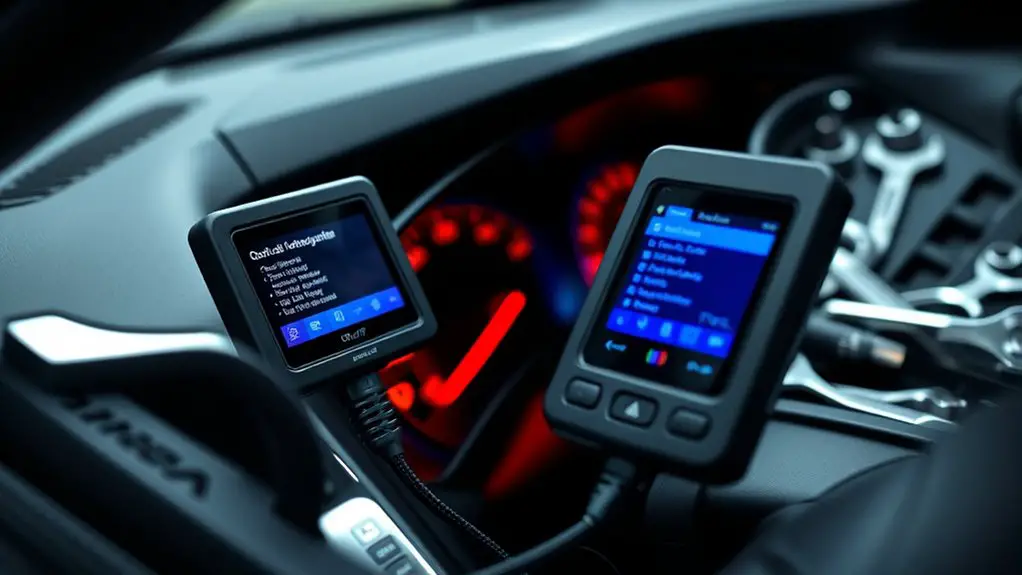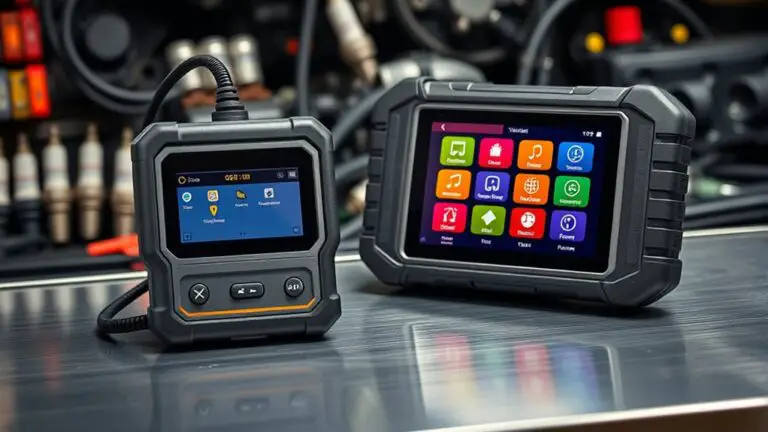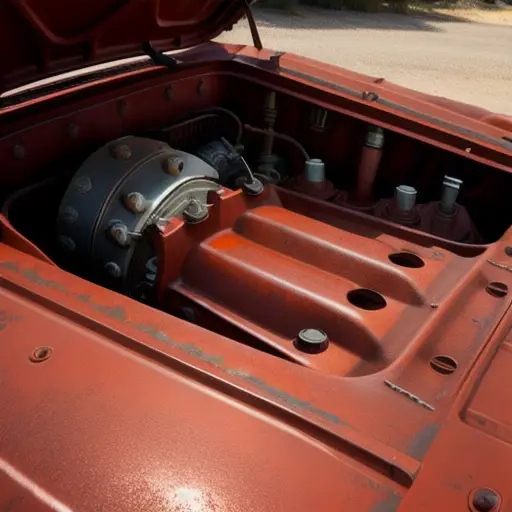How to Interpret Can’t Read OBD Codes When Scanning a Modern OBD-II Cars
If you can’t read OBD codes on a modern OBD-II car, start with your tool’s compatibility and update status. Verify the scanner supports the vehicle’s protocol and that its firmware is current. Check for weak or corroded connectors, and confirm the ignition state and engine run conditions when codes should appear. If results are unclear, verify with freeze-frame data and readiness monitors, then cross-check with manufacturer info. Stay tuned—the next steps reveal precise troubleshooting methods and practical fixes.
Understanding Why Some OBD Codes Won’t Read
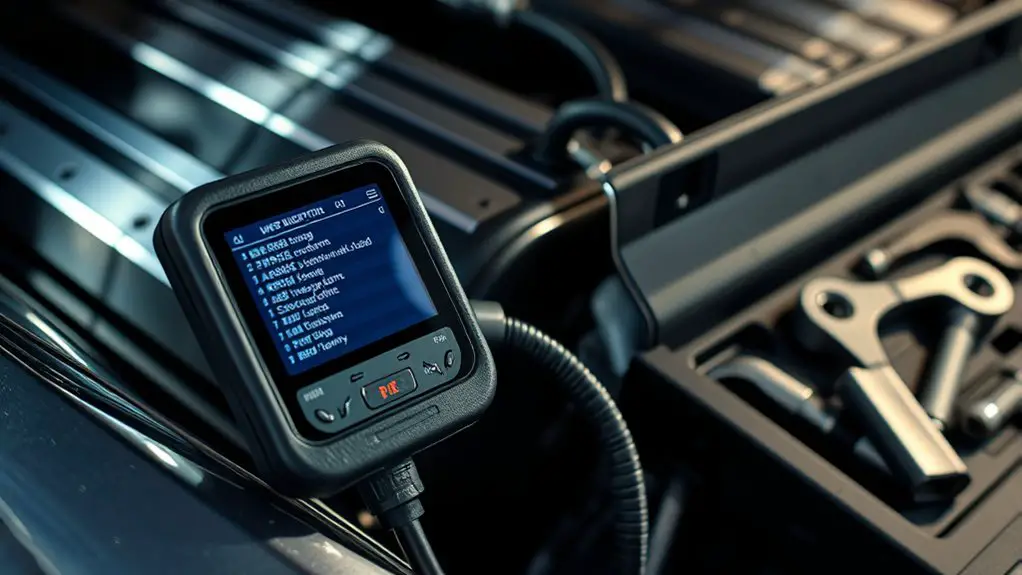
There are several reasons OBD codes might not read, and identifying the cause is the first step in a quick fix. You’ll approach this methodically, not guessing. First, consider OBD II limitations—some vehicles lack full diagnostic coverage for every system, especially older or high-mileage units. This can prevent certain codes from returning when you scan. Next, scanning challenges may arise from poor tool compatibility, weak connectors, or corroded pins in the OBD port. Confirm your scanner supports the vehicle’s protocol and firmware is up to date. Check ignition status, as some codes only populate with key on, engine running. Also verify that the vehicle’s computer is awake; a blank or intermittent read can signal a reset or low system activity. Finally, be aware of temporary faults that clear after a drive, or data-block restrictions that hide pending codes until criteria are met. Stay precise, document findings, and rule out each factor systematically.
Types of OBD-II Codes and Their Meanings
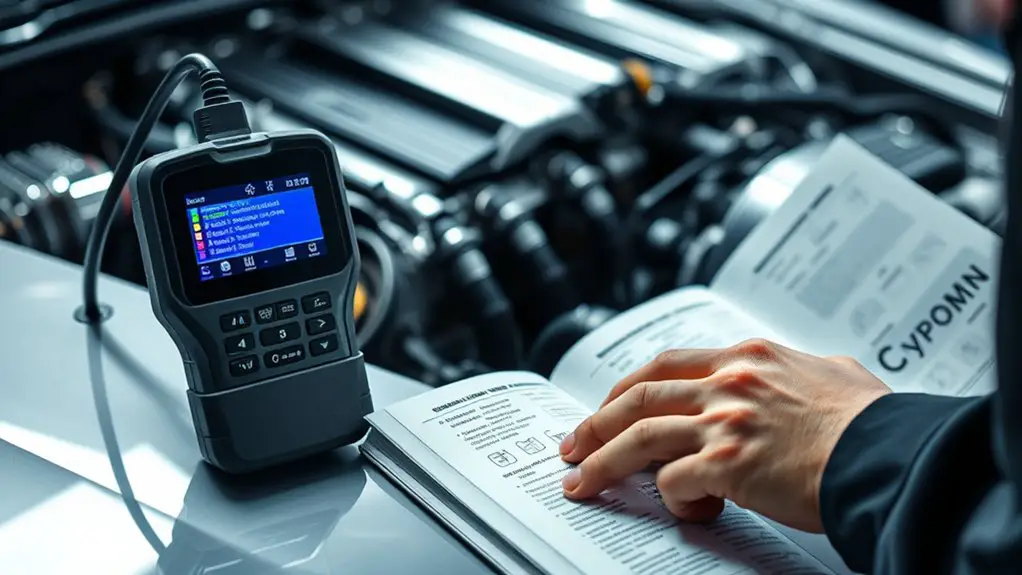
OBD-II codes fall into four families—P, B, C, and U—each signaling a different system or area of your vehicle that needs attention. You’ll learn how to map these codes to specific meanings, from powertrain issues to body, chassis, and network concerns, so you can triage problems quickly. Freeze frame data further clarifies the context, helping you interpret when and under what conditions the codes triggered.
Code Families Overview
Code families in OBD-II are organized by the type of fault and the scope of impact, so you can quickly assess severity and location. You’ll focus on how each code group signals whether an issue is related to powertrain, emissions, or communication, guiding your diagnostic approach. Code categories define the fault’s general domain: permanent versus temporary, generic versus manufacturer-specific, and whether the problem is sensor, actuator, or circuit related. This overview helps you prioritize tests, knowing that a closely related family often shares diagnostic steps. Stay precise: map symptoms to the corresponding code family, verify consistency across tests, and avoid chasing noise. By understanding code families, you gain actionable insight without unnecessary delving into unrelated data.
P, B, C, U Meanings
P, B, C, and U codes categorize the faults you’ll encounter in OBD-II diagnostics by their scope and origin, helping you pinpoint where to look first. You’ll interpret p code meanings for powertrain faults, reserve b codes for body systems, c codes address chassis concerns, and u codes map to network and communication issues. Each category signals where the fault resides and how it may affect driveability, diagnostics, and repair steps. Use b code definitions to assess interior circuits and components, c code explanations for drivetrain linkages and mechanical interfaces, and u code interpretations to diagnose data-link problems. This framework streamlines triage, enabling efficient inspections, targeted tests, and informed decisions when reading live data or wiring diagrams. Maintain clarity, precision, and purposeful debugging throughout.
Freeze Frame Significance
Freeze frame data captures the exact vehicle conditions at the moment a fault is stored, providing a snapshot like speed, RPM, engine load, and sensor readings that help you reproduce and diagnose the issue. In this section, you learn why freeze frame matters for data interpretation and why it isn’t optional. The stored snapshot shows the context of the fault, not just the fault code, so you can correlate conditions to symptoms. Use it to verify consistency across drive cycles and to distinguish intermittent faults from permanent ones. Treat freeze frame as a baseline for troubleshooting, guiding you toward likely causes without guesswork. Precision here reduces time, narrows scope, and reinforces your autonomy in resolving modern OBD-II challenges.
Readiness Monitors: What They Tell You

Readiness monitors are built-in tests that the vehicle’s computer runs to verify essential systems—like emissions, fuel trim, and misfire detection—are operating correctly.
Readiness monitors are built-in tests the vehicle’s computer runs to verify essential systems are operating correctly.
You’ll use these checks to gauge real-time health, not just fault codes. Readiness indicators show whether each monitored system completed its test and passed. If a monitor is not ready, you should not assume the system is faulty; it may simply be unfinished or waiting for a drive cycle. Monitor status helps you prioritize fixes, diagnose potential causes, and understand why emissions readiness matters for inspections.
- Confirm which monitors are ready and which are not
- Interpret a failed status as a potential root cause
- Track progress across drive cycles for a complete picture
- Use readiness data alongside codes for accurate reporting
Freeze-Frame Data and How to Use It
Freeze-frame data captures the exact conditions when a fault occurs, so you’ll start with the basics of Freeze-Frame Basics to know what it records and when it’s captured. Then, use Data Retrieval Tips to pull the stored values efficiently, confirming engine load, RPM, speed, and sensor readings present at the moment of the fault. This will set a precise foundation for interpreting how those conditions relate to the OBD code and the underlying issue.
Freeze-Frame Basics
Freeze-Frame data captures a snapshot of an engine’s operating parameters at the exact moment a fault is detected. You’ll use this snapshot to interpret why the code appeared and what conditions triggered it. Treat freeze-frame as a focused clue, not the whole story, and read it with disciplined logic.
- Identify key parameters and their values at fault
- Compare live data to the stored snapshot for consistency
- Assess potential diagnostic implications of anomalies
- Use the frame to validate repairs and prevent repeat failures
Data Retrieval Tips
Data retrieval hinges on extracting and interpreting freeze-frame data accurately; when a fault is detected, you’ll pull a focused snapshot of engine conditions, compare it to live readings, and map anomalies to likely causes. In practice, you capture key parameters at the moment of failure and reduce noise through repeatable steps, ensuring the snapshot reflects true operating states. Use data logging to build a timeline, so you can spot intermittent issues and verify fixes. Interpret codes by correlating sensor values, pressure, and temperatures with known tolerances, not guesswork. This disciplined approach improves code interpretation and speeds diagnosis. Maintain consistent logging intervals, document context, and review trends, so you preserve clarity while preserving your freedom to troubleshoot efficiently.
Common Causes for Incomprehensible Codes
Unknown or nonsensical OBD codes arise from several common sources. You’ll want to tighten your approach to diagnostic tools and sharpen your code interpretation, because clarity comes from disciplined checking, not guesswork.
- Intermittent sensor faults that don’t set a steady fault can produce erratic codes
- Electrical noise or grounding issues that corrupt data signals during scans
- Improper scan procedure, including incorrect vehicle configuration or incompatible tooling
- corrupted memory or firmware mismatches between ECU and scanner
To stay precise, verify the basics first: confirm good connections, clear any interferences, and check the scanner’s compatibility. If a code doesn’t repeat, log the symptom, retry under controlled conditions, and compare against manufacturer data. When codes finally appear consistently, document the exact wording, freeze frame data, and MIL status. This disciplined approach strengthens your diagnostic tools repertoire and improves code interpretation, delivering dependable results rather than speculation. You’ll gain clarity, confidence, and freedom in your troubleshooting workflow.
Pending vs. Stored Codes: Key Differences
Pending codes indicate faults that the ECU has detected but hasn’t yet met the criteria to trigger the Malfunction Indicator Lamp (MIL), whereas stored codes are the formal records the scanner retrieves after a drive cycle or a deliberate reset. You’ll notice pending codes represent provisional symptoms, not confirmed failures. They signal the system saw an anomaly but lacks repeatability or severity to illuminate the MIL. Stored codes, by contrast, are the official history your scanner can pull, often after a drive cycle or reset, and they point to faults deemed active or history-based. The distinction matters for diagnosis: pending codes urge patience and recheck, while stored codes guide troubleshooting with actionable fault messages. In practice, you’ll use pending codes to monitor evolving conditions, then rely on stored codes to confirm persistent issues. Treat them as complementary data, not competing indicators, and interpret both with a disciplined, systematic approach. pending codes, stored codes.
Steps to Verify Code Validity
Begin by confirming the code on a reliable scan tool and cross-checking it against the vehicle’s service information. You’re validating reliability, not guessing. Use a consistent method to prevent misreads and guarantee your interpretation rests on solid data. For code validation, rely on reproducible results across scans and known vehicle behavior.
- Confirm the same code appears across multiple scans with the same conditions
- Cross-check freeze-frame data and sensor readings for anomalies
- Compare readings to service information and manufacturer guidance
- Repeat with a second, trusted scan tool to verify consistency
Adopt disciplined scanning methods: document each step, note vehicle conditions, and avoid premature conclusions. If results diverge, rule out user error, improper tool setup, and data corruption before proceeding. This approach keeps you aligned with objective truth, supports accurate interpretation, and preserves your autonomy in diagnostics. Remember, precise verification builds confidence and prevents chasing false positives in code interpretation.
Tools and Techniques for Deciphering Obscure Codes
Building on solid code validation, you’ll employ specific tools and disciplined techniques to decipher obscure OBD codes. You approach this with methodical precision, treating each code as data that must be verified against real-world behavior. Start with diagnostic tools that reveal high-resolution data streams, freeze frames, and emission-related freeze blocks. Use code catalogs and manufacturer service information to map rare codes to plausible fault conditions, then cross-check with live sensor readings to confirm consistency. Employ structured troubleshooting techniques: reproduce the fault, isolate subsystems, and document each step with timestamps and parameter IDs. When you encounter obscure codes, you’ll leverage data logging and waveform analysis to identify anomalies not obvious from a single snapshot. Keep a disciplined log of interpretations and outcomes to prevent drift into ad-hoc conclusions. This approach empowers you to interpret uncertainty, maintain control, and progress toward a definitive diagnosis without unnecessary risk or guesswork.
When to Seek Professional Diagnostic Help
When you’re unsure about OBD codes after a structured diagnostic run, it’s time to seek professional help. You’ll benefit from a grounded assessment, not guesswork, when the readings don’t align with expected patterns. A qualified tech uses professional services and diagnostic equipment to validate codes, perform tests, and interpret data trends with objectivity. Trust in a systematic approach: confirm history, reproduce symptoms, and rule out common false positives before moving forward.
- Recognize when data conflicts with symptoms and escalate to professional services
- Reserve judgment until verified by calibrated diagnostic equipment
- Rely on a technician’s methodical checklist to avoid premature repairs
- Seek a written diagnostic plan and time estimate before authorizing work
Translating Codes Into Practical Repairs
To translate a code into a repair plan, you’ll first identify the exact fault meaning and its implications for your vehicle’s systems. Next, you’ll map those findings to concrete repair tactics, prioritizing safety, feasibility, and cost-effectiveness. Finally, you’ll create a focused, step-by-step action list that guides you from diagnosis to verification of fix.
Translate Code Meaning
Translating code meanings into practical repairs starts with identifying the exact fault and then mapping that code to likely causes and actionable tests. You’ll translate the code into a concise hypothesis, then confirm with targeted diagnostics, not guesswork. Rely on your diagnostic tool features to isolate sensors, circuits, and modules, while considering common failure modes. Use code translation techniques to prioritize the most probable causes and design efficient tests that yield actionable results.
- Interpret codes by grouping related faults and prioritizing high-impact failures
- Use diagnostic tool features to verify sensor and actuator operation
- Correlate freeze-frame data with live readings for precise narrowing
- Plan tests that directly differentiate between competing causes without unnecessary steps
Apply Repair Tactics
Apply repair tactics by turning each translated code into a concrete, testable action plan. You’ll convert code interpretation into stepwise tasks, verify inputs, and measure outcomes before proceeding. Start with a focused hypothesis, then perform targeted checks or replacements, documenting results succinctly. Use established repair techniques to isolate faults, compare expected vs. actual readings, and confirm or re-run tests to validate fixes. Maintain a disciplined approach: track conditions, tools, and safety notes, iterating until the code clears. This methodical process keeps you in control, preserving freedom through clarity and accountability.
| Column A | Column B |
|---|---|
| Step 1 | Define objective and baseline data |
| Step 2 | Execute targeted test and collect evidence |
| Step 3 | Implement repair technique and re-test |
| Step 4 | Verify stability and document |
| Step 5 | Close with final confirmation and review |
Frequently Asked Questions
Can Certain OBD Codes Be Read Only With Factory Diagnostic Tools?
Yes, some codes require factory tools. You’ll encounter diagnostic limitations where only those tools access additional, manufacturer-specific codes and data. You’ll notice that generic scanners read broad codes, but certain parameters stay locked behind factory tools. You should plan for that reality, methodically verifying with official software when needed. Don’t fear—this just clarifies technique, not capability. You’ll master the process by documenting faults, testing guidelines, and noting when factory tools are essential for complete results.
Do Aftermarket Scanners Misinterpret Codes From Newer Vehicles?
Yes, aftermarket scanners can misinterpret codes from newer vehicles due to scanner limitations and aftermarket compatibility issues. You’ll find manufacturers update protocols slowly, and some OBD-II extensions aren’t fully supported on current models. To avoid surprises, verify tool compatibility with your vehicle brand and year, use OEM or benchmarked equivalents when possible, and cross-check critical codes with a factory tool. Rely on methodical tests, not assumptions, to maintain accurate diagnostics and freedom in diagnosing.
How Do CAN Bus Errors Affect Code Readability?
CAN bus errors can hinder code readability by causing sporadic data loss or corruption, so your readings drift or fail outright. You’ll see error propagation across diagnostic messages, making some codes unreadable or misinterpreted. To mitigate, check signal integrity for each node, verify CAN communication baud rates, and guarantee robust wiring. Rely on standard diagnostic protocols, log arming faults, and isolate interference sources. You’ll preserve clarity when you manage error propagation and minimize signal interference.
Can Firmware Updates Change Code Meanings or Availability?
Firmware changes can alter code meanings or availability, but they don’t erase fundamentals. You’ll want to verify updated code definitions against vendor release notes and your scanner’s supported definitions. Before trusting new codes, test across multiple vehicles and modes to confirm consistency. Keep firmware updates documented and back up existing definitions if possible. You should anticipate temporary gaps as definitions converge, and apply patches promptly to maintain accurate diagnostics.
Are There Regional Standards Impacting OBD-II Code Formats?
Regional variations do influence OBD-II code formats, but you’ll find broad alignment due to regional code standardization. You should expect core diagnostic codes to align across regions, with minor exceptions for manufacturer-specific or market-specific adaptations. If you encounter unexpected formats, verify with the vehicle’s service data and your scan tool’s supported standards. Your approach: identify the code, cross-check against standardized tables, and note any regional variations that could alter interpretation. Stay methodical, stay informed, stay empowered.

